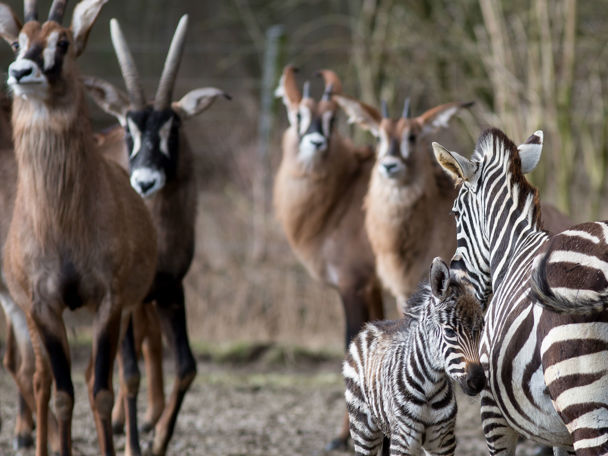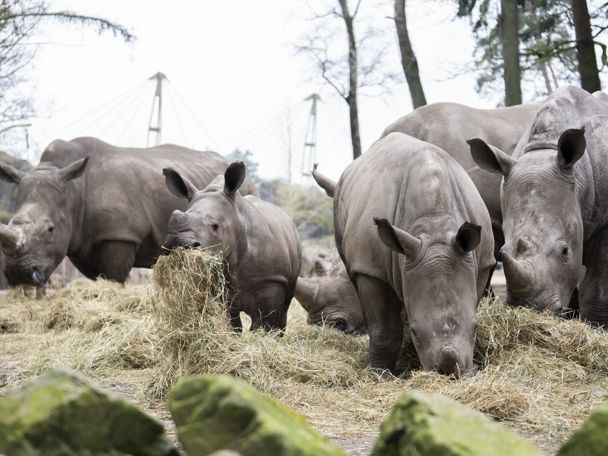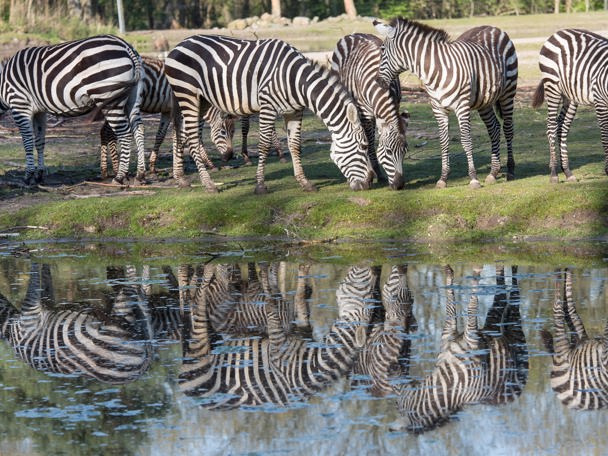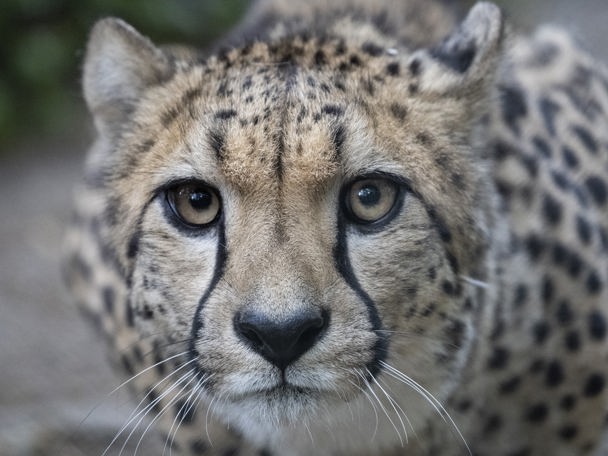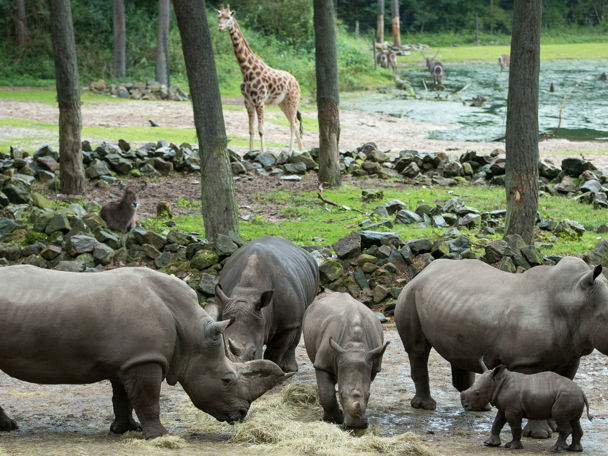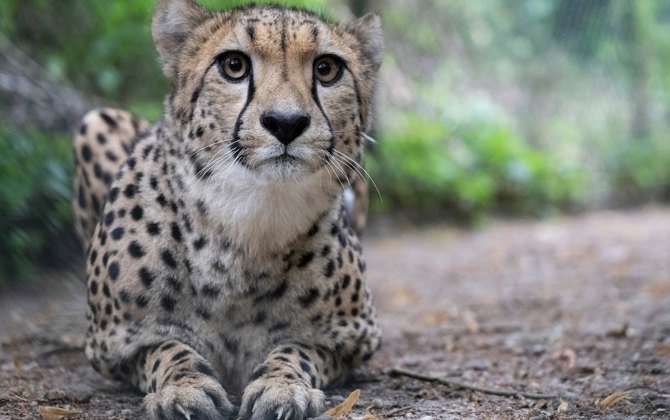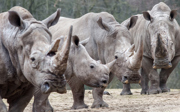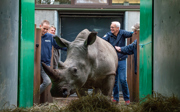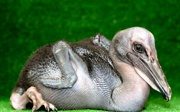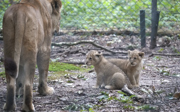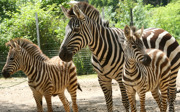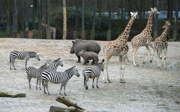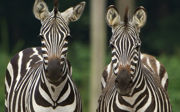If you want to see a lot of big animals in a short time on an African vacation, don't go to the rainforest, visit the savannah! Your visit to Burgers' Safari starts at the large-windowed observation huts where you can view the cheetahs and the lion family. The path takes you along the watering hole for the animals, where the square-lipped rhinoceroses regularly go to quench their thirst. Watch the savannah landscape unfold before your eyes, home to groups of wildebeest, zebras, waterbucks, grazing antelopes, East African oryxes and giraffes. There is a mud pool near the watering hole, which the rhinos are particularly fond of in summer. Waterbucks sometimes swim in the pond in the middle of the savannah.
The enormous rock formation at the edge of the savannah is known in Africa as a "kopje", or head. Between these rocks lies a vast terrace overlooking the savannah. The raucous helmeted guineafowl provide the right sound to accompany this panorama. Just like on a real safari in an East African national park, it's not hard to find Africa's characteristic wildlife— many savannah dwellers are quite large, and the ungulates often live in herds that are hard to overlook. Nowhere else in the world is the animal biomass per square kilometre greater than in the vast, fertile grasslands of East Africa!
The East African savannah has high temperatures all year round and is subject to drought for much of the year. Most savannahs in East Africa have two rainy seasons and two dry seasons a year. Because of these climatic conditions, the herds do not stay in the same place. As soon as there has been no rain for a few days, and the grass growth decreases, zebras and wildebeest begin to migrate. The migratory routes and times do not seem to follow an innate and fixed pattern but are probably based on the prevailing food situation. Scientists suspect that animals—particularly wildebeest—can see where the rain falls from cloud formations. These animals can likely also hear thunder from afar, and even smell water from great distances.
For many large herbivores, there is safety in numbers: by moving as a large herd, they increase the odds of survival for each individual animal. Antelopes and zebras often seek out giraffes, whose long necks make them the "lookout towers of the savannah". As soon as a hungry, hunting lion or leopard is spotted, one animal will sound the alarm, and the whole herd starts moving. The predators are confronted by a single, moving mass, and have to try to isolate one or more animals from the group for a successful kill. Moving together increases safety, and thereby their chance of survival.
It also helps that the various animal species have often developed their own food strategies, so competition among species is limited. The most striking example is the giraffe, which, due to its length, is the only species of herbivore that can reach the tender, young leaves at the top of the trees. Because zebras, wildebeest and gazelles often eat different parts of the savannah grass, they literally and figuratively stay out of each other's way. The wildebeest calves are also all born in close succession in a short period. Because a group of calves is born more or less at the same time, the odds of survival of each animal are increased. If calves were born a few at a time throughout the year, there would always be an easy meal available to predators.
30 October 2025
17 Oct 2024
18 Jan 2024
26 Sep 2023
10 Nov 2022
4 Nov 2022
15 Aug 2022
5 Aug 2022
3 Jun 2022
15 Mar 2022
10 Feb 2022
10 Jan 2022
